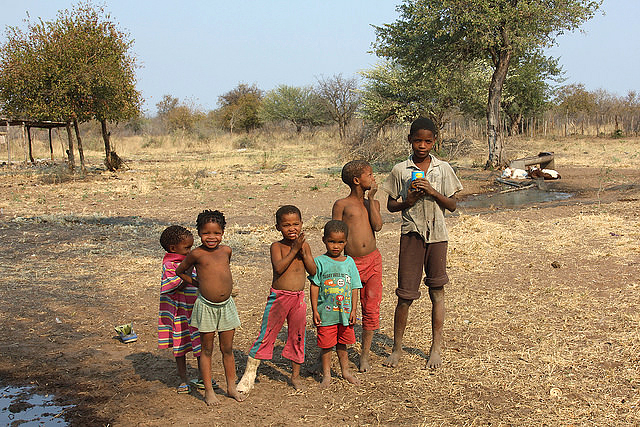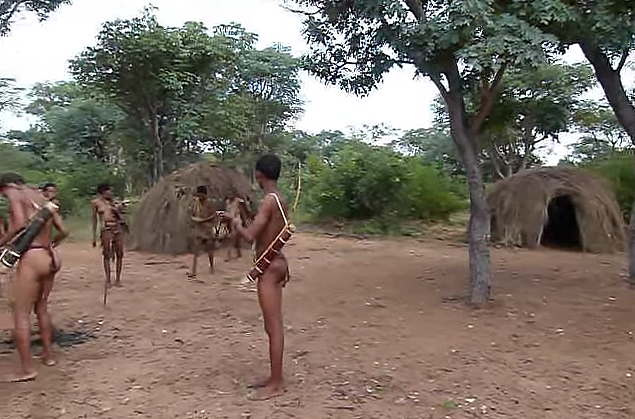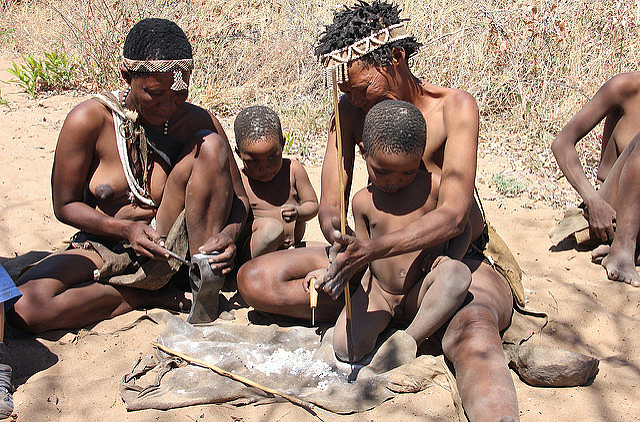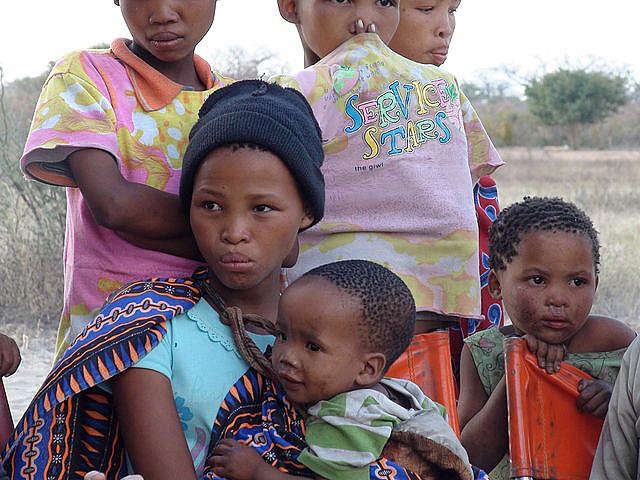While many Ju/’hoansi children in the Nyae Nyae Conservancy attend primary schools in their villages, most drop out rather than continue with higher level schooling in Tsumkwe, the central town in the region. According to a news report on December 14 in The Namibian, about 122 out of 153 children from throughout the conservancy dropped out this year after they completed the third grade.

The journalist, Charmaine Ngatjiheue, quoted figures provided by anthropologist Jennifer Hays. Ms. Hays said that one of the reasons for the high drop-out rate is the fact that the children must live at the school in Tsumkwe rather than at their remote villages in the Conservancy. Ms. Hays partly blamed the drop-out rate on deplorable conditions in the hostel where the children have to live. Another factor, she indicated, is that there is a language barrier between the teachers and the students.
Hays, who wrote an article titled, according to The Namibian, “Nyae Nyae Village Schools over 25 Years,” told the reporter, “Education is important, but their skills are just as important. The ministry of education needs to find ways to make it easier for these children to transition into the Tsumkwe school.” Despite the fact that 8,396 children in the Conservancy attended primary schools in 2012, only 840 went on to higher levels of schooling. The point, she emphasized, is that the authorities need to acknowledge the culture of the Ju/’hoansi and find ways to preserve it if they want the children to get additional education.

The reporter contacted Sanet Steenkamp, the Permanent Secretary of the Ministry of Education for Namibia, who said that the ministry is developing an action plan to address the high rate of Ju/’hoansi students dropping out of school. Ms. Steenkamp indicated that it was up to the regional leaders in Nyae Nyae to handle the extension of the curriculum into more relevant subjects for their community. The plan the ministry is preparing will provide for new school buildings in the villages and it will ensure that needed services are given to the members of the communities.
Steenkamp added that the ministry is committed to the plan, which will restructure the education program so it will improve the schooling of the Ju/’hoan children. “In terms of the mother tongue issue, we have a draft policy that makes provision for [the] mother tongue to be taught at schools,” she said. She visited the school in Tsumkwe and observed teachers who spoke Ju/’hoan but who were teaching in English. She said she was investigating why they are not using the local language.
According to a news report in June 2015, the Chief of the Ju/’hoansi Traditional Authority, Bobo Tsamkxao #Oma, also blamed the school authorities and the teachers for the failures of the Ju/’hoansi kids in their schools. He spoke up at a public meeting at the time, decrying the fact that the teachers didn’t motivate the children to do their work in school. According to that report, only 4 out of 87 twelfth grade students managed to pass in 2014. It sounds as if nothing much has changed in the past year and a half: the failure rate remains high, the leaders in the community are blaming the educators, who are blaming the community authorities.

That June 2015 news report in The Namibian was more hard hitting than the one last week: Mr. #Oma clearly did not pull any punches last year. He told his audience that the teachers were going out drinking with the students in Tsumkwe. The adults in the town were also at fault since many were quite insensitive to the traditional village social and cultural conditions that the kids came from. A news story from July 2011 was similarly discouraging about the lack of successes in the Ju/’hoansi schools.
In their monumental book about the Ju/’hoansi of Nyae Nyae, Biesele and Hitchcock (2013) were much more upbeat about the education of the children, at least when comparing the contemporary schooling of the San kids and the conditions in the 1980s. For instance, they quoted the anger Mr. #Oma expressed in 1987 about the unreasonable punishments and beatings that the teachers meted out on the students, often for no reason at all.

“When I look in the future,” Chief #Oma said, “to see what [my children] will see, one thing I see is that my children have come to fear schooling. They fear it because they fear being beaten. So they’ve all separated, left school, and gone off in all directions… All that the children see is pain. And that’s why they go about avoiding school these days. They don’t want to be there (p. 233).”
The stern corporal punishment was contrary to the spirit of the normally peaceful Ju/’hoan society, though it appears from the recent news reports that beatings, at least, are no longer part of the problem. In fact, Biesele and Hitchcock write, the schools started by the Ju/’hoan people themselves as part of their Village Schools Project have been well-supported by the communities and have been, on the whole, successful. The Ju/’hoansi now need to figure out how to improve their higher level schooling in Tsumkwe.